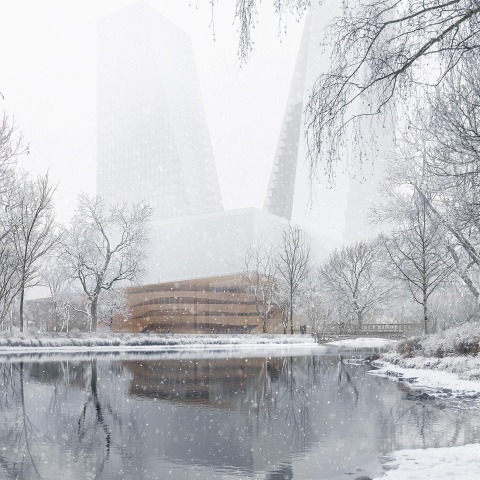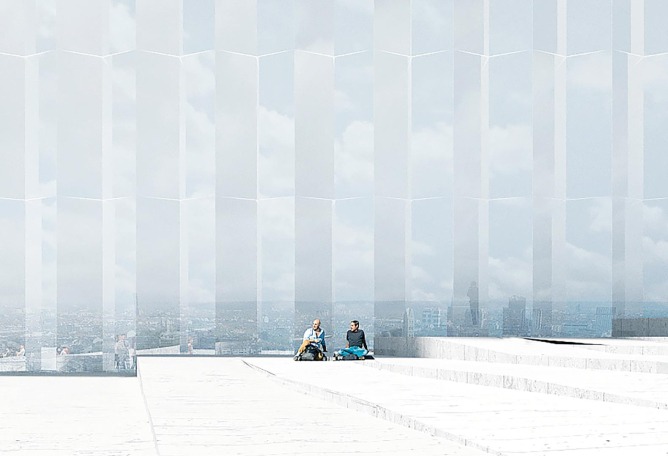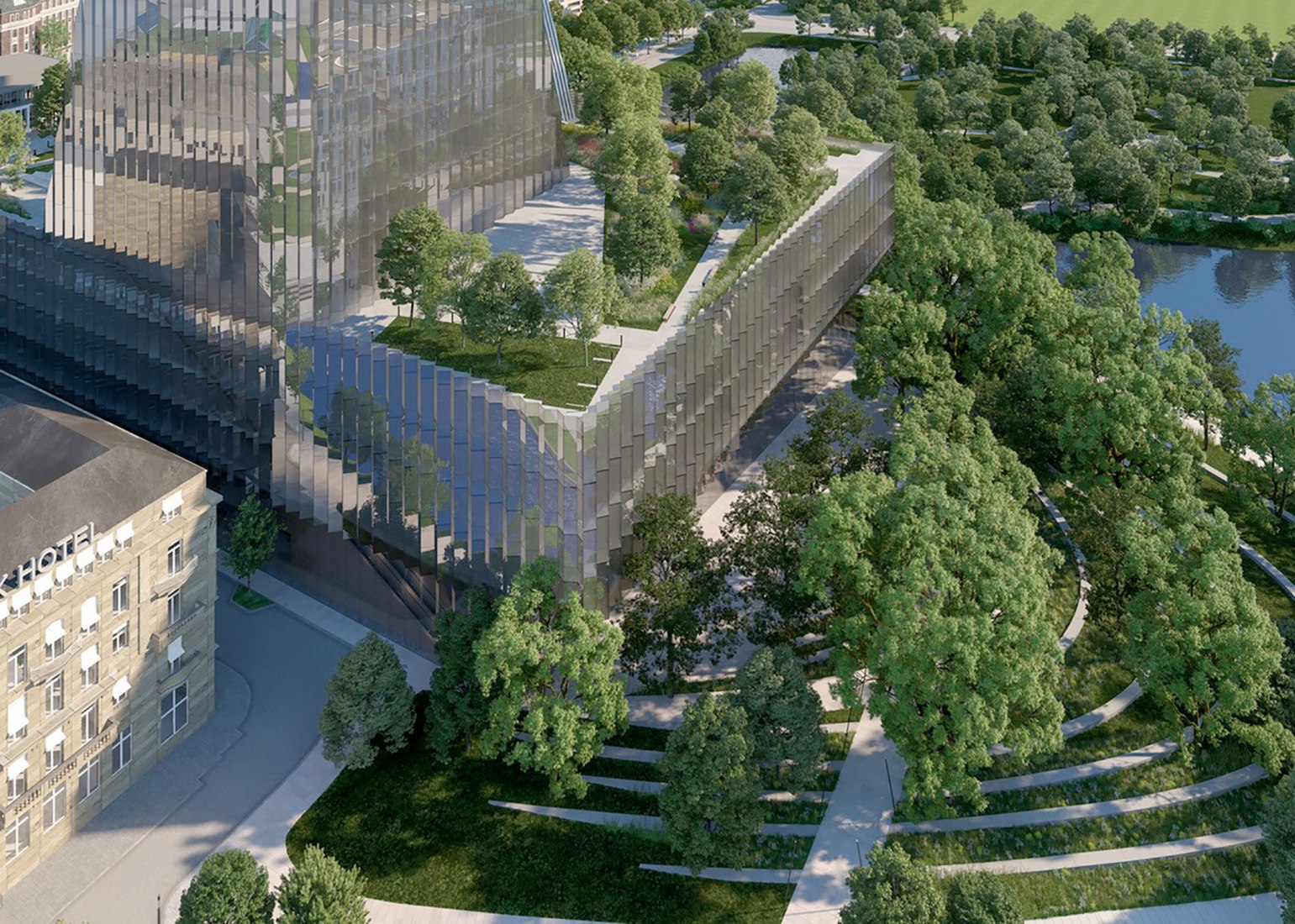With a state-of-the-art opera house, a hotel, restaurants and cafés, office spaces and residential units, the project aims to create a shared cultural epicenter for the people of German city.
Project description by Snøhetta
The new opera house will replace the existing one on Heinrich-Heine-Allee 16A, as the current floor plan is not suited to facilitate a well-functioning opera house at an international level. The proposal therefore suggests a 1.350 square meter expansion to the North for a fully integrated side stage and enough space for back-of-house functions and additional program, and a 1.455 square meter expansion to the East to facilitate a larger foyer. To minimize the footprint into the Hofgarten park, the program at ground level is limited and functions that can be placed in the higher-up floors have been lifted.
A Warm Welcome
Bridging from the lush, historic Hofgarten park, the landscape design surrounding the opera house is developed with focus on the flow of people through an urban forest leading to the opera house’s foyer. The curved landscape reorganizes the road systems and strengthens the connection to Königsallee through a new bridge in the south and a connection to the West.
Approaching the foyer and main entrance from the park, the boundaries between indoors and outdoors are blurred, bringing the foyer and the park together. Walking on the clearly defined carpet of granite stone, a 16-meter-tall transparent glass façade reveals a sculptural wood wall within the foyer. With overhanging balconies stretching out from the circular core, the organically shaped wall creates a spatial phenomenon transitioning from a vertical wall to a horizontal sky. From the forest-like entrance from the park, through the transparent glass shell, the meeting with the wooden core creates an intimate, warm and comforting welcome to the opera house.
Bringing People Together
Generous staircases and ramps lead from the foyer up to a café on the fourth floor of the building – the first of three floors in a horizontal cantilevering volume topping off the foyer and main stage below. From the North-Western part of this horizontal level, visitors can get a first glimpse of the magnificent views of the surrounding area.
From the café, visitors can see into the rehearsal spaces of the opera, including the choir and orchestra rehearsal rooms. The large ballet rehearsal space on the Eastern side of the horizontal volume is extended over two floors, ensuring good light conditions and a great sense of space, while also giving a sense of security and privacy by being placed on the higher floors. When appropriate, the rehearsal spaces can be opened up to the audience for performances.
Wardrobes and smaller exercise rooms are also located on the horizontal volume, while spacious cargo lifts connect this program to storage rooms, the orchestra pit and the back-of-house areas. Administration and the opera canteen can also be found on the fourth and fifth floor.
With approximately 25.000 square meters of mixed-use opera and hotel functions, as well as publicly accessible areas, the horizontal volume represents a significant architectural element. Aimed to build relationships and synergies between inhabitants, visitors, guests, employees and artists, it is also an element binding together the park, the Rhine and the sky.
On the top of the horizontal volume, a publicly accessible roof landscape offers breathtaking views of the city and park. Directly accessible from the foyer with an escalator, the 6.000-square-meter public roof landscape appears as a green courtyard with an attractive 360-degree view. Designed for flexibility and multifunctional use, the roofscape is ideal for cultural events, performances and other activities. Other commercial functions such as restaurants and cafes are connected to the three horizontal levels, creating an appealing public attraction in the city.
An Iconic V-Shaped Dancing Duet
From the horizontal levels, an unmistakable V-shaped silhouette reaches up towards the sky. The ensemble of towers changes its silhouette from each new perspective, creating a constantly changing expression reminiscent of a dancing duet. The towers are strategically designed to reduce shading of surrounding areas of the park and neighborhood, while also creating better daylight conditions in the courtyard.
The towers are programmed primarily for the hotel, residential areas and office spaces. Focus has been put on creating clear divisions between the functions and providing protection from changing weather conditions, while also ensuring a visual connection and uniform appearance of the building. This is enabled through a layered glass façade with different scaling and transparency. Contrasting an opaquer outward-facing tower façade, the inward-facing façades are mostly self-shaded and therefore allow for a high level of transparency and interaction with the public on the roofscape.
The multilayered Duett Düsseldorf is set to create a cultural meeting space and public attraction, further building on Düsseldorf’s standing as a hub for arts and culture.




























